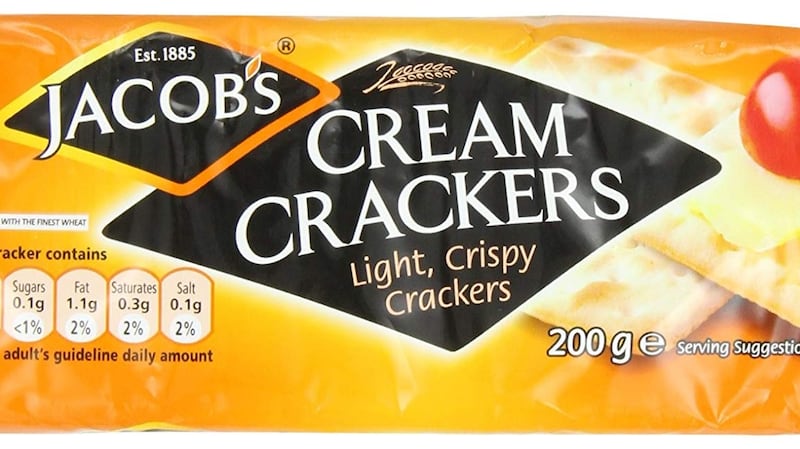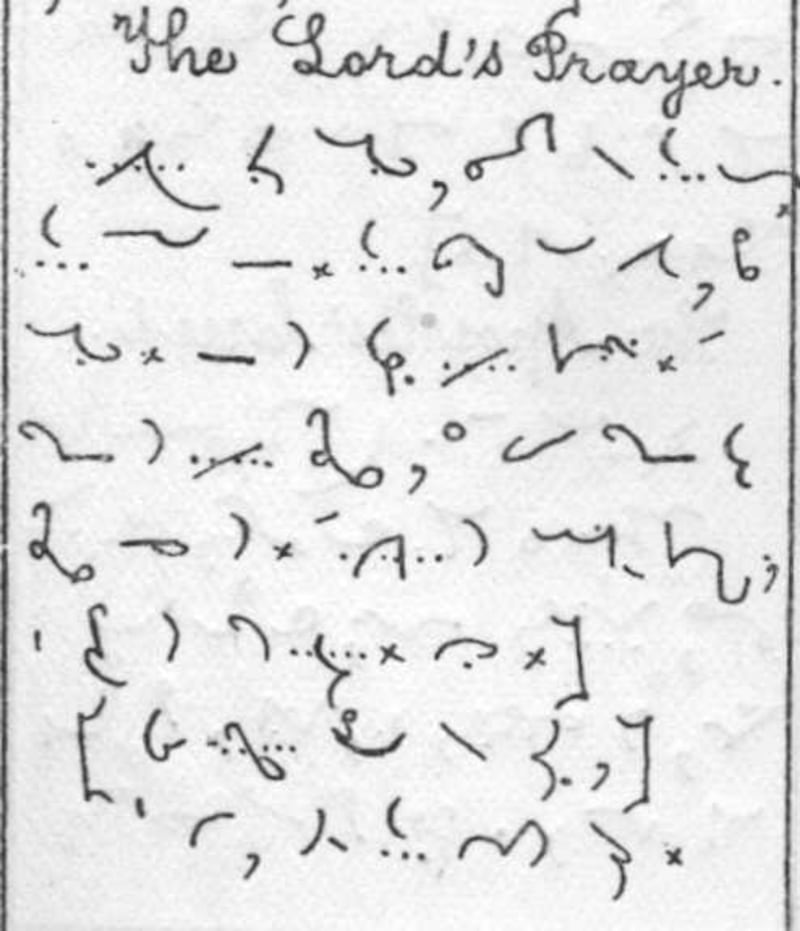For the weekend that is in it, we thought we’d look at just some of the ways Irish people have shaped the consumer world in which we live. From tastier crisps, to improved ability to listen to our hearts, to hot chocolate, Irish people have had quite the impact.
1. Next time you whip out your swanky smartphone for a selfie or to photograph your lunch spare a thought for the Offaly-born and splendidly named John Joly. You might not recognise his name but he was one of the most brilliant scientists of his – or any – generation and helped bring the colour photograph to life. In 1894 he devised a system of photography which used plates marked with narrow lines in three colours to allow photographers develop colour images from a single photographic plate using what became know as the "Joly Method". It would be remiss to leave you with the impression that is all Joly did when it was very much a by-the-way thing. The Trinity graduate was a geologist, physicist and engineer as well as being an inventor. He was the Chair of Geology and Mineralogy in Trinity College from 1897 until his death in 1933 and also played a key role in the development of radiotherapy as a cancer treatment and came up with techniques to accurately estimate the age of a geological period using the radioactive elements in minerals. Oh and his theory as to what made ice slippy held sway in the scientific world.
2. Where would the world be without Joe Murphy, eh? He and his most famous friend, the inimitable Mr Tayto changed the way the world snacked and made it infinitely better. Mr Tayto came into this world fully dressed in his fancy Dan suit in a two-room premises on Dublin's Moore Street in 1954. Joe Murphy started out with just 500 quid and a van full of crisps that sold for 4p (in the old, old money). In its first year, Tayto sold fewer than 350 bags a day; today it sells more than 500 bags every minute. They are made by one-time bitter rival Hunky Dorys, having been sold to Largo Foods in 2006 for €62 million. But while giving us Tayto, should be a big enough boast, Murphy did a lot more than that: he is credited with making crisps palatable. Before he came along, crisps were – generally speaking – enhanced with nothing more elaborate than salt but then he added cheese and onion flavouring to the mix and the world became a better place. His notion was exported all over the world, as were his Tayto – in the suitcases of Irish people.
3. How different would medicine be if we did not have the hypodermic syringe? We have Dublin-born doctor Francis Rynd and a pain in the face to thank for it. Rynd studied medicine in Trinity College – where he was said to have been a bad student and far too fond of partying and fox hunting. In spite of his busy social life, he qualified and started work in the Meath Hospital and also served as the medical supervisor of Mountjoy prison. In an edition of the Dublin Medical Press published in March of 1845 he wrote an article which was to change medicine completely.
"Margaret Cox of spare habit was admitted into hospital, May 18, 1844, complaining of acute pain over the entire of left side of face… On June 3rd a solution of [morphine]was introduced to the supra-orbital nerve and along the course of the temporal, malar, and buccal nerves, by four punctures of an instrument made for the purpose. In the space of a minute all pain (except that caused by the operation, which was very slight) had ceased, and she slept better that night than she had for months… She left the hospital on August 1st in high spirits, and promised to return if she ever felt the slightest pain again. We conclude she continues well, for we have not heard from her since."
4. In the 21st Century the role of the pharmacist is – largely – confined to dispensing medicines and offering advice to customers. It used to be a different story and pharmacists were allowed to use their extensive training to create potions and pills which they could then use to treat the ills of their patients. In 1931, Thomas Smith, a pharmacist in the Liberties, came up with a cream which proved effective in the treatment of nappy rash, eczema, pressure sores and other minor skin lesions. He called it Smith's Cream but it didn't catch on so he called it Soothing Cream. Dear old Dubliners struggled with the "th" which is how it came to be known as Sudocrem. In the 1970s it was launched in the UK and quickly became the market leader for nappy rash cream there as it was here. It is now available in more than 40 countries. And is still made in Dublin.

5. The cream cracker comes from Waterford and we might never have seen it had it not been for the endeavours of two quaker brothers called William and Robert Jacob. The Jacobs people had a profitable business making biscuits which sailors leaving the port of Waterford could take on their long sea journeys. But as you can imagine, the biscuits were dense affairs and hardly the most palatable things. But everything changed in 1885, when the two brothers came up with a technique to make biscuits lighter and crispier. The key was fermented yeast dough – yum. It was made and pummelled and then left to ferment for 24 hours before being rolled out and then folded over on itself multiple times before being baked. What started out in Waterford is not available in countries all over the world. Not content to rest on their laurels, the two brothers expanded their range and made a whole lot of "fancier" biscuits which Irish people could have with their tea – a drink which was suddenly all the rage. We are still waiting for a technique to eat their crackers without covering ourselves in crackery crumbs, mind you.
6. Harry Ferguson was a bicycle repair man who happened to invent the modern tractor. He is also believed to be the first Irish person to build and fly his own plane and he developed the first four-wheel drive Formula One car. But he is best known for his tractors. He was born in Dromore, Co Down, in 1884 and started out as a mechanic before developing an interest in aviation and then moving into car sales. In 1917 tractors were still two units, with the plough detachable from the engine. Ferguson's idea was to make them a single unit. He went into partnership with the Ford people but that ended in acrimony and in the courts and eventually he set up the business which became known as Massey Ferguson.
7. We might never have had hot chocolate were it not for Hans Sloane from Co Down. The doctor travelled extensively in the Caribbean when he came across cocoa as a drink mixed with water. He hated it but worked out a way to mix it with milk. When he came back to this part of the world be brought his concoction with him. It attracted the interest of the Cadbury family and the rest is history. Sloane also donated a collection of more than 70,000 items and artifacts picked up on his travels to the British nation and that collection became the cornerstone for the establishment of the British Museum, the British Library and the British Natural History Museum. And if you have ever wondered who Sloane Square at the heart of Chelsea was called after, wonder no more. It was Hans.
8. How poor would our world be without the rasher sandwich? We owe it all to Henry Denny and his creation will celebrate its 200th birthday next year. Before the Waterford butcher got involved in the bacon curing process, large chunks of meat used to be left to soak in brine in order to extend its shelf life. Denny dispensed with the chunks and the brine and instead used long flat pieces of meat covered in salt. The quality and the shelf-life of the bacon was increased and his rashers started being exported across the world. Our breakfasts would not be the same without him.

9. Shorthand is a dying skill in an age of easy access to recording devices. But for more than 100 years it was an essential tool for secretaries and journalists and while many can't be bothered learning it, it remains an incredibly handy tool to have at one's disposal. Many – including Pricewatch – who have studied shorthand will have studied a variety called Gregg. It is used the world over and was invented by a Monaghan man called Henry Gregg. Its back story is pretty tragic. Henry was born into a staunchly Presbyterian family and started school in 1872. On his second day the five-year-old Gregg was caught talking to a classmate and received a bang on the head which seriously damaged his hearing. He struggled to follow his lessons as a result of the hearing impairment and that left his parents and school thinking he was "slow" to use the language of the day. Fast forward five years and his father came across a shorthand system called Pitman which he was so impressed by that he made all his children learn. All except Henry because of his slowness. So Henry came up with an entirely different variety of shorthand and which he had the good sense to copyright in 1888. He moved to the US five years later and took his shorthand with him. It was an enormous success and helped him grow a massive publishing and education company. He died in 1948.

10. We take the stethoscope as we know it for granted, but were it not for Wexford-born Arthur Leared, it may never have existed. The original stethoscope was invented in 1819 by a French man but it was Leared who worked out how to make it better and it is his improvements which are still visible today. He figured out that if the rudimentary listening cylinder was connected with two rubber tubes with ear pieces then it would deliver clear results for the doctor. It made its international debut at the Great Exhibition in London in 1851 and after that there was no stopping it.
11. Unlikely as it may sound, the Induction Coil was the brainchild of Rev Nicholas Callan, a priest and professor of science at St Patrick's College in Maynooth. He wove two wires around the end of an electromagnet and connected it to a battery and when the current was interrupted a spectacular spark from a second unconnected coil was generated. While he didn't know it at the time, he had invented something which would still be used in car ignitions almost 200 years on.
12. Keen readers of The Irish Times will be familiar with the word Cantillon. It is a regular feature of the business pages but what does Cantillon mean? It doesn't actually mean anything, it is a name. Richard Cantillon from Kerry is widely regarded as being one of the fathers of the dismal science that is economics. Way back in 1730 he published his career-defining work, the snappily titled Essai Sur La Nature Du Commerce En Général or Essay on the Nature of Trade in General. In his essay he details modern economic theories including cause and effect, monetary theory, entrepreneur theory and spatial economics. It was name checked by Adam Smith in his the Wealth of Nations.
13. Who invented whiskey? Who can say for sure? Was it Irish monks? Scottish ministers? Vikings? The absolute truth has been lost in the mists of time and in a spirit haze but what we can say with some degree of certainty is that the first legal distillery which made whiskey was in the Antrim town of Bushmills so we'll have to give at least some of the credit to them. The Bushmills distillery was established as long ago as 1608 and whiskey has been made there ever since.
14. Ireland didn't invent low-cost flying but an Irish company certainly deserves a huge amount of credit for making it as big a thing as it is. Back in the early 1990s, Ryanair was a failing airline but then one of its senior executives, a man called Michael O'Leary, travelled to the US to see how low-cost carrier SouthWest Airlines went about its business. He came back a changed man and set about changing Ryanair. While the timing of O'Leary and Ryanair's epiphany was perfect – coinciding as it did with the opening up of Europe's skies and the breaking of the grip flag carrying legacy airlines had on routes – it is hard to imagine how low cost flying would have grown so fast and so big had it not been for Ryanair's boisterous and somewhat unconventional approach to flying.











